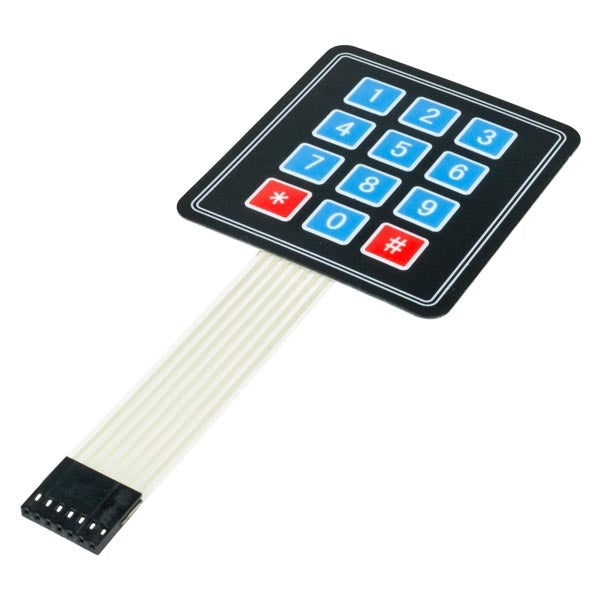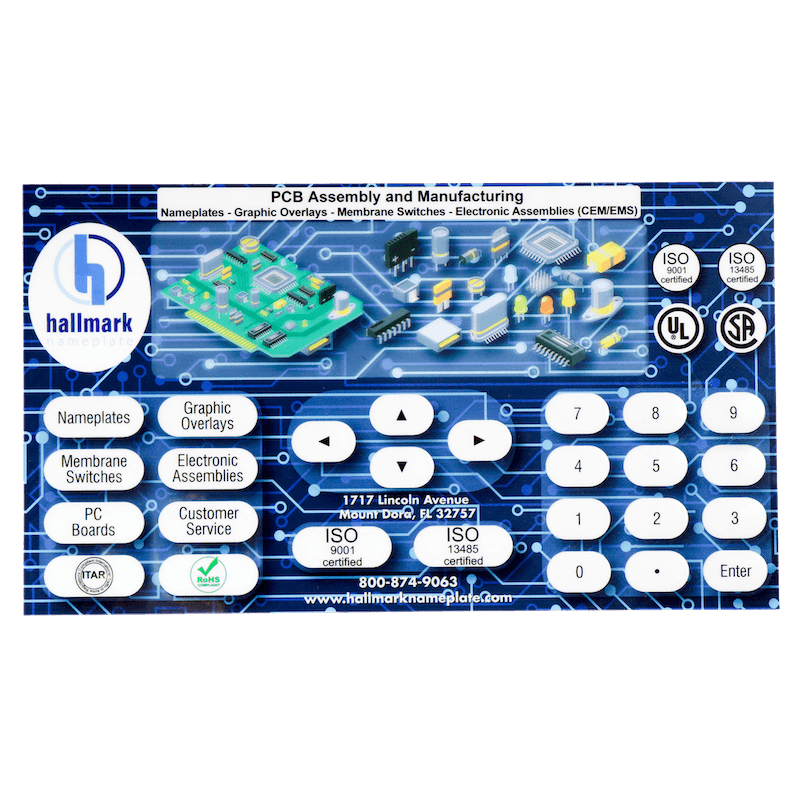How Membrane Switches Are Shaping the Future of Electronic Interfaces
How Membrane Switches Are Shaping the Future of Electronic Interfaces
Blog Article
Recognizing Membrane Switches: The Key to Sturdy and Trusted Controls

What Are Membrane Layer Buttons?
Membrane switches are an innovative service in the world of interface innovation, integrating capability and layout effortlessly. These devices work as a user interface in between individuals and digital systems, incorporating numerous elements right into a compact style. Normally created from adaptable, slim layers of products, membrane layer buttons are created to react to touch, enabling users to interact with machinery and electronic tools effectively.
The main aspects of a membrane layer switch include a published circuit layer, visuals overlay, and a spacer layer that stops unintended activation. The graphic overlay can be personalized to mirror brand name identification or individual choices, improving aesthetics while guaranteeing usability. Membrane layer buttons are commonly made use of in various applications, including medical devices, customer electronic devices, and commercial equipment, owing to their toughness and resistance to ecological variables such as dampness and dirt.
Among the key benefits of membrane layer buttons is their ability to stand up to wear and tear, making them optimal for high-traffic atmospheres. Furthermore, they are lightweight and need very little room, enabling ingenious layouts in item growth. On the whole, membrane switches represent a useful and reliable choice for modern-day digital interfaces, weding innovation with user-centric style concepts.
Exactly How Membrane Switches Over Job
The operation of membrane switches over hinges on a basic yet reliable mechanism that translates individual input into electronic signals. When a customer presses the switch, the leading layer warps, permitting a conductive element in the circuit layer to make call with a corresponding conductive pad on the underside of the graphic overlay.
The design of membrane layer buttons can vary, but they often integrate domes or responsive elements to provide feedback to the individual, enhancing the total experience - membrane switch. The materials made use of in membrane buttons, such as polyester or polycarbonate, add to their longevity and resistance to environmental variables, consisting of dampness and dirt. In addition, the published circuits are normally encapsulated, which safeguards them from damage gradually.
Benefits of Membrane Buttons

Additionally, membrane switches are recognized for their sturdiness. Created from durable materials, they are immune to dust, moisture, and physical wear, which dramatically prolongs their life expectancy compared to standard mechanical buttons. This longevity makes them specifically ideal for high-traffic atmospheres and applications needing longevity.
One more significant benefit is the ease of cleaning and upkeep. The smooth surface area of membrane changes reduces dust build-up and is often invulnerable to spills, making them perfect for settings that need constant sanitization.
In addition, membrane buttons supply a streamlined account, resulting in a thinner design that can be integrated into numerous tools without adding mass. This function not just boosts the aesthetic appeal but also adds to a more ergonomic item style.
Applications of Membrane Layer Buttons
Functional and user-friendly, membrane switches find applications throughout a large range of industries, consisting of medical devices, consumer electronics, and commercial equipment. In the clinical field, these switches are important to tools such as diagnostic tools, patient tracking systems, and infusion pumps, where reliability and simplicity of cleaning are crucial. Their capacity to endure severe settings and keep capability makes them ideal for such applications.

In consumer electronics, membrane layer buttons are used in items like microwaves, washing machines, and remote controls - membrane switch. Their streamlined see here now layout enables user-friendly interface, boosting the general individual experience while offering longevity and resistance to deterioration
Commercial equipment likewise takes advantage of membrane buttons, particularly in control panels for equipment and automation systems. These buttons use security against dirt and wetness, ensuring consistent efficiency in tough atmospheres. Furthermore, their customizable attributes permit makers to customize them to details operational requirements, improving effectiveness and functionality.
Selecting the Right Membrane Change
When selecting a membrane layer button, it is necessary to consider different variables that affect performance and viability for details applications. The main considerations consist of ecological conditions, tactile responses, durability, and design specifications.
First, analyze the operating atmosphere; buttons revealed to wetness, chemicals, or severe temperatures require details try this site materials to make sure longevity and performance. Next off, review the requirement for tactile feedback. Depending on user communication, some applications may take advantage of a responsive reaction to confirm activation, while others might like a non-tactile design for aesthetic reasons.
Resilience is another important variable; membrane layer buttons need to be designed to endure frequent use, effects, and abrasion. Make certain the chosen switch can withstand the expected lifecycle, especially in high-usage circumstances.

Conclusion
In verdict, membrane layer switches offer as important parts in the style of trusted and resilient control systems throughout different markets. The adaptability of membrane changes allows for customized solutions that meet specific functional demands, reinforcing their significance in modern-day technology.
Membrane layer switches over stand for a critical element of contemporary interface style, blending functionality with durability in different applications.Membrane layer switches are a sophisticated service in the world of customer interface technology, combining functionality and style seamlessly. Normally created from adaptable, thin layers of materials, membrane layer switches are developed to respond to touch, enabling individuals to connect with equipment and electronic devices efficiently.
The design of membrane switches can differ, yet they typically include domes or tactile aspects to give responses to the user, boosting the general experience.In final thought, membrane layer changes serve as crucial parts in the layout of trusted and resilient control systems across different sectors.
Report this page